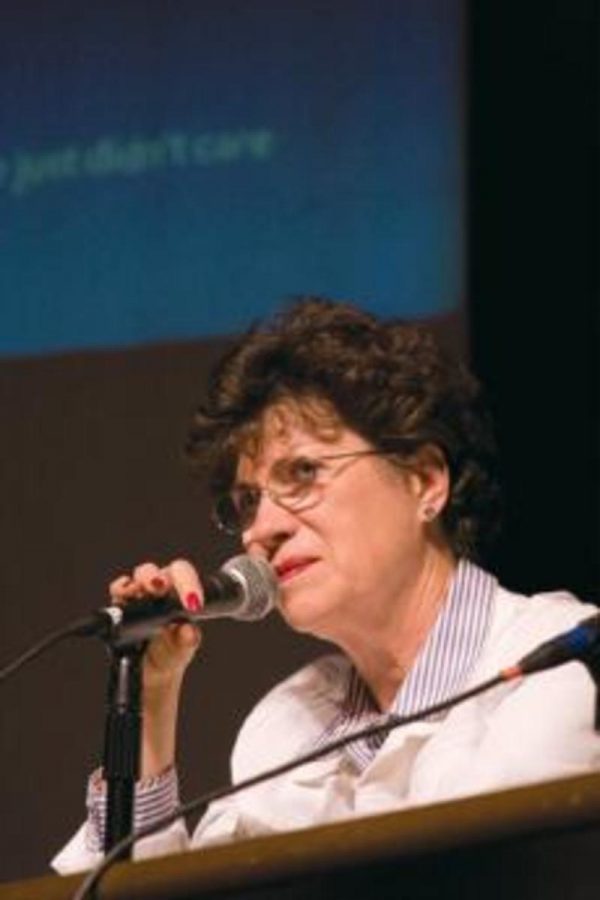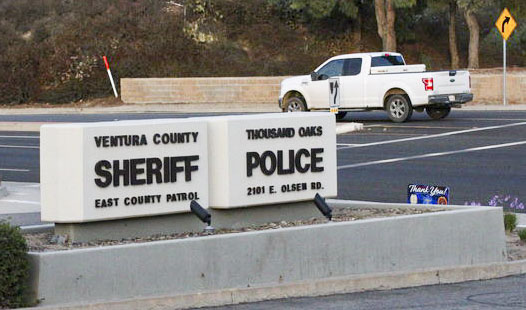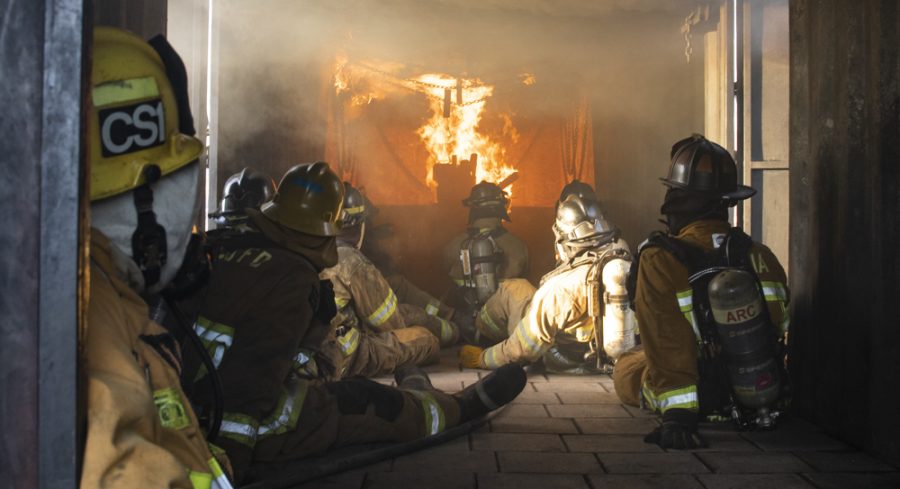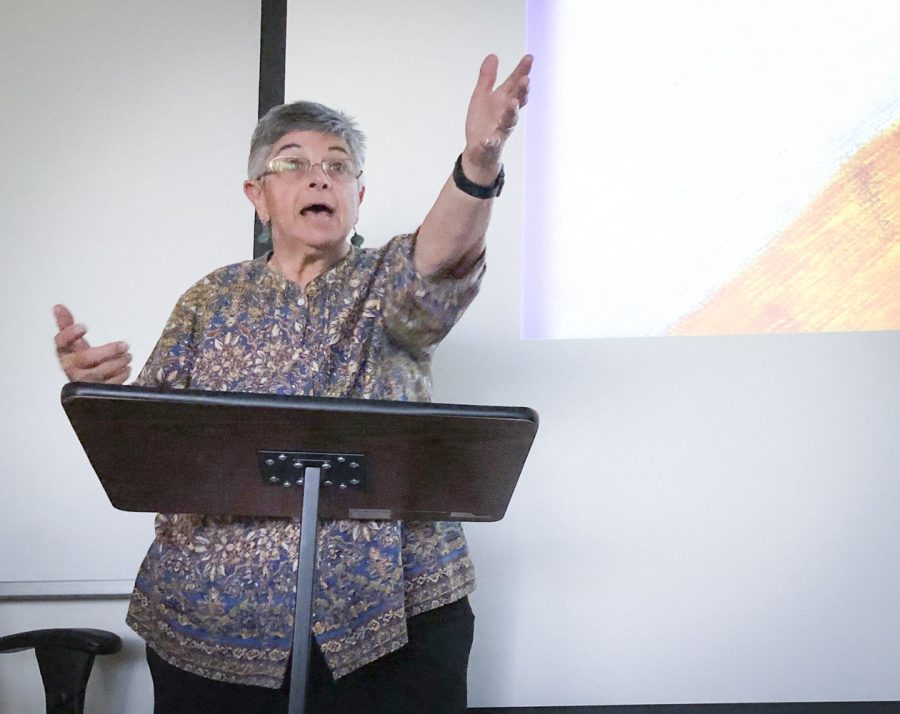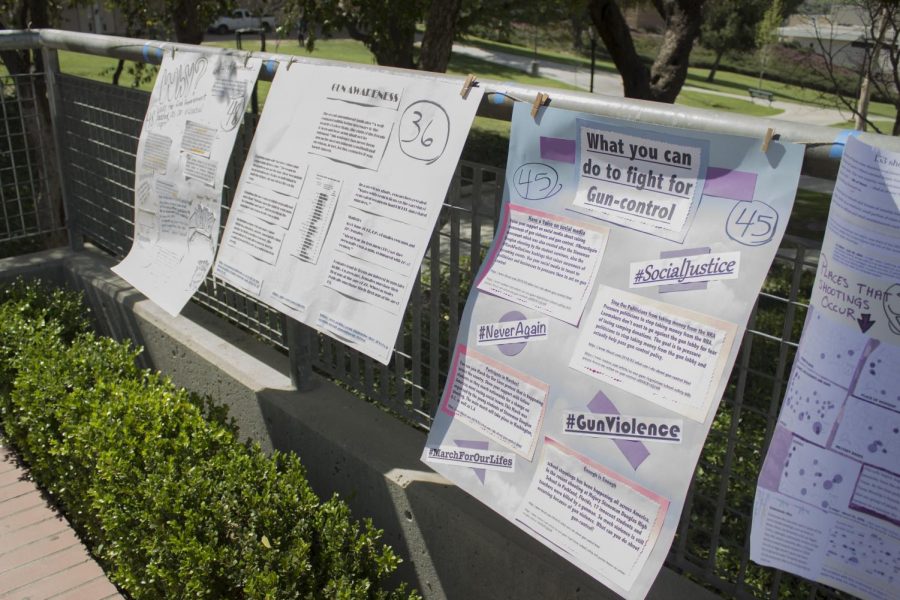Local environmental activists spoke out last week against the government’s failure to clean up nuclear waste at a Simi Valley rocket test site. Students were encouraged to join in promoting awareness.
As part of Moorpark College’s Year of the Environment, panelists from Cleanup Rocketdyne informed students of the numerous rocket tests done since 1959 at Rocketdyne, located in the hills south of Simi Valley, and how the government has neglected its proper cleanup during a Feb. 26 event.
“No one would be listened to as far as activists were concerned,” said William Bowling, founder of ACMEla.org, a website dedicated to spreading awareness. After working tirelessly to increase public knowledge of this issue, he is now beginning to see the fruit of his labor as local newspapers pick up this community issue.
After a short video and slideshow, students were able to participate and ask questions of Bowling, and fellow panelists Christina Walsh, a founder of Cleanup Rocketdyne, and Bonnie Klea, a cancer survivor who has represented employees seeking workers’ compensation.
Since its founding nearly 50 years ago, Rocketdyne has run over 30,000 rocket tests and several experimental nuclear reactors. The site is also home to three nuclear accidents, one of which is the third worst nuclear accident of all time. Some of these facts are unknown to local residents.
“I remember thinking there was an earthquake a lot,” sophomore Andrew Rittenburg said. “I was younger then, and didn’t know of any rockets.”
Many Los Angeles and Ventura County residents did not know of the accidents that were in such close proximity to their homes because the Atomic Energy Commission kept them a secret for over 20 years. Today, people still think that whatever problem there was then has been solved now. After all, Sage Ranch, a campground located less than a mile away from the testing site, is still open.
In a creek bed that separates Rocketdyne and Sage Ranch, environmentalists and government officials have found toxins such as antimony, asbestos, and lead. They also found plutonium both on and off the site, which has a half-life of 22,000 years.
Traces of toxins have been found in the surrounding hills of Simi Valley, West Hills and Canoga Park.
“It all started with taking a lot of pictures,” said panelist Christina Walsh, founder of CleanupRocketdyne.org. “We crawled through bushes and used long lenses.”
Soon enough, after showing NASA representatives their photos, Walsh and other activists were being let on to small parts of the base to capture, document, and test the materials still left behind.
But how has this affected nearby residents? In a five mile radius in the L.A. county corridor between highway 118 and the U.S. 101 freeway, the number of cancer deaths has risen six to eight times higher than projected for last year.
One of the panelists, Bonnie Klea, lived near and worked on the testing site for many years. She now works to get governmental compensation to her fellow coworkers who have suffered just like her. “In 1995 I was diagnosed with bladder cancer,” she recalled solemnly. “It was from nuclear exposure.”
Further, retinal blastoma, a rare cancer of the retina, known only to have cases in the areas outside Chernobyl, has been reported nine times in West Hills alone.
“I know I didn’t know about this,” stated Moorpark student Becky Stoner. “How can we help spread the news?” To the panelists, the answers were simple, yet carried the weight of responsibility.
“Read, read, read,” exclaimed Klea. She specifically pointed out local newspapers and her organization’s website.
“These are real people that have been impacted,” stated Walsh. “Send a letter. Make a phone call. Each of these count.”

Christina Walsh leads the presentation about the nuclear accidents that occured at the Santa Susana Field Laboratory. (Jonathan Castillo)

The Santa Susana Field Laboratory lies just behind hills which are accesible through only a few number of closed roads. The land is located 13.8 mi. away from Moorpark College.

